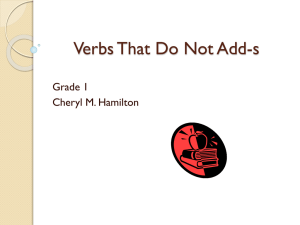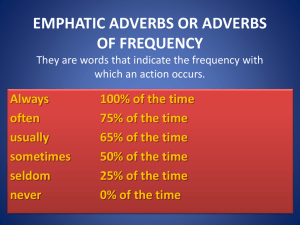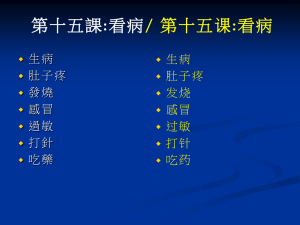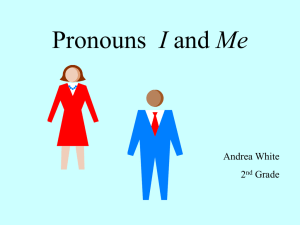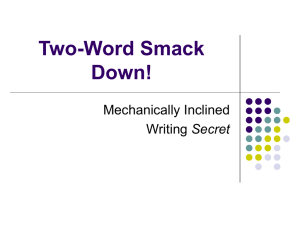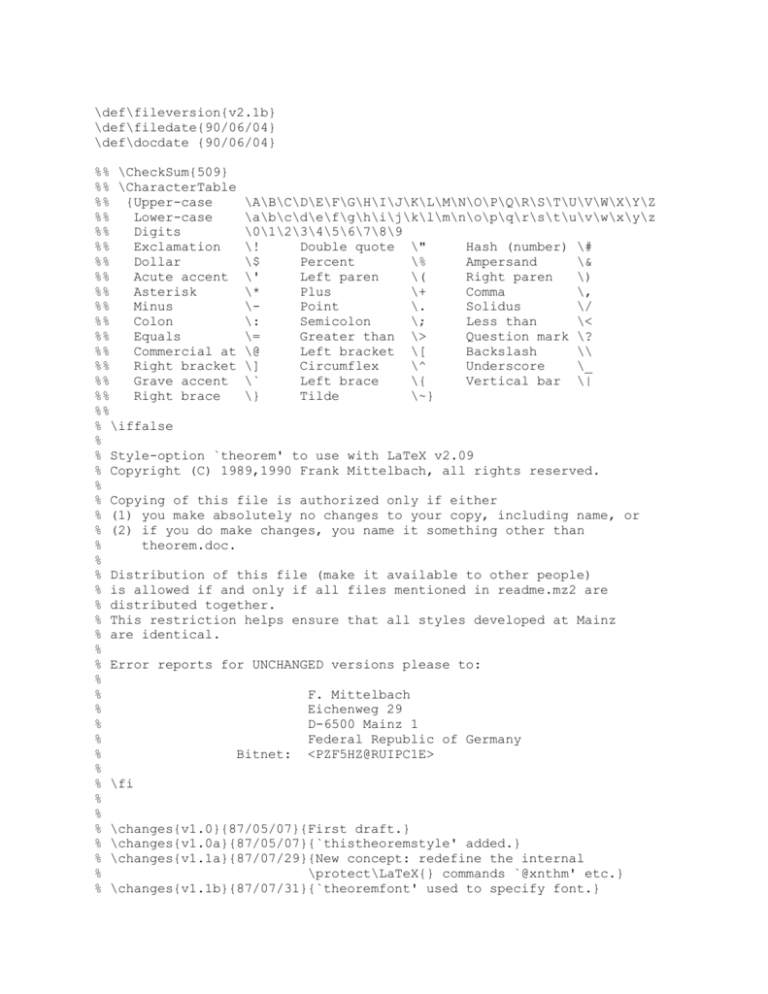
\def\fileversion{v2.1b}
\def\filedate{90/06/04}
\def\docdate {90/06/04}
%% \CheckSum{509}
%% \CharacterTable
%% {Upper-case
\A\B\C\D\E\F\G\H\I\J\K\L\M\N\O\P\Q\R\S\T\U\V\W\X\Y\Z
%%
Lower-case
\a\b\c\d\e\f\g\h\i\j\k\l\m\n\o\p\q\r\s\t\u\v\w\x\y\z
%%
Digits
\0\1\2\3\4\5\6\7\8\9
%%
Exclamation
\!
Double quote \"
Hash (number) \#
%%
Dollar
\$
Percent
\%
Ampersand
\&
%%
Acute accent \'
Left paren
\(
Right paren
\)
%%
Asterisk
\*
Plus
\+
Comma
\,
%%
Minus
\Point
\.
Solidus
\/
%%
Colon
\:
Semicolon
\;
Less than
\<
%%
Equals
\=
Greater than \>
Question mark \?
%%
Commercial at \@
Left bracket \[
Backslash
\\
%%
Right bracket \]
Circumflex
\^
Underscore
\_
%%
Grave accent \`
Left brace
\{
Vertical bar \|
%%
Right brace
\}
Tilde
\~}
%%
% \iffalse
%
% Style-option `theorem' to use with LaTeX v2.09
% Copyright (C) 1989,1990 Frank Mittelbach, all rights reserved.
%
% Copying of this file is authorized only if either
% (1) you make absolutely no changes to your copy, including name, or
% (2) if you do make changes, you name it something other than
%
theorem.doc.
%
% Distribution of this file (make it available to other people)
% is allowed if and only if all files mentioned in readme.mz2 are
% distributed together.
% This restriction helps ensure that all styles developed at Mainz
% are identical.
%
% Error reports for UNCHANGED versions please to:
%
%
F. Mittelbach
%
Eichenweg 29
%
D-6500 Mainz 1
%
Federal Republic of Germany
%
Bitnet: <PZF5HZ@RUIPC1E>
%
% \fi
%
%
% \changes{v1.0}{87/05/07}{First draft.}
% \changes{v1.0a}{87/05/07}{`thistheoremstyle' added.}
% \changes{v1.1a}{87/07/29}{New concept: redefine the internal
%
\protect\LaTeX{} commands `@xnthm' etc.}
% \changes{v1.1b}{87/07/31}{`theoremfont' used to specify font.}
%
%
%
%
%
%
%
%
%
%
%
%
%
%
%
%
%
%
%
%
%
%
%
%
%
%
%
%
%
%
%
%
%
%
%
%
%
%
%
%
%
%
%
%
%
%
%
%
%
%
%
%
%
%
\changes{v1.2a}{88/01/08}{`@endtheorem' now globally defined.}
\changes{v1.2b}{88/01/11}{`newtheorem' only allowed in the preamble.}
\changes{v1.3a}{88/02/14}{`theoremfont' now a toks register.}
\changes{v2.0a}{88/11/16}{New implementation and new documentation.}
\changes{v2.0a}{88/11/16}{No layout changes but internal modifications
old sybstyles won't work.}
\changes{v2.0b}{89/01/30}{`global' used for all definitions.}
\changes{v2.0c}{89/06/15}{Documentation translated to English.
Thanks to LLL and Nina}
\changes{v2.1a}{90/02/15}{Support for new font selection.}
\DoNotIndex{\@endparenv,\@ifdefinable,\@ifnextchar,\@ifundefined}
\DoNotIndex{\@namedef,\@nameuse,\@spaces,\@tempa,\@warning}
\DoNotIndex{\ }
\DoNotIndex{\begingroup,\bf}
\DoNotIndex{\csname}
\DoNotIndex{\def,\do,\docdate}
\DoNotIndex{\endcsname,\endgroup,\endinput,\endtrivlist,\expandafter}
\DoNotIndex{\filedate,\fileversion}
\DoNotIndex{\gdef,\global}
\DoNotIndex{\hbox,\hskip}
\DoNotIndex{\ignorespaces,\input,\it,\item}
\DoNotIndex{\labelsep,\let,\llap}
\DoNotIndex{\makeatletter}
\DoNotIndex{\noexpand}
\DoNotIndex{\refstepcounter,\relax,\rlap}
\DoNotIndex{\setlength,\sl,\space,\string,\strut}
\DoNotIndex{\the,\trivlist,\typeout}
\DoNotIndex{\vbox}
\DoNotIndex{\xdef}
\def\deflabel#1{\tt #1\hfill}
\def\deflist#1{\begin{list}{}{\settowidth\labelwidth{\tt #1}%
\setlength\leftmargin\labelwidth
\addtolength\leftmargin\labelsep
\let\makelabel\deflabel}}
\def\enddeflist{\end{list}}
\def\envfont{\tt}
\title{An Extension of the
\LaTeX{} theorem environment\thanks{This file
has version number \fileversion, last
revised \filedate, documentation dated \docdate.}}
\author{Frank Mittelbach}
\signature{\advance\hsize by 3pc
Frank Mittelbach\\
Electronic Data Systems\\
(Deutschland) GmbH\\
Eisenstra\ss e 56\\
D-6090 R\"usselsheim\\
Federal Republic of Germany\\
\net {\rm Bitnet:} pzf5hz@drueds2}
%
%
%
%
%
%
%
%
%
%
%
%
%
%
%
%
%
%
%
%
%
%
%
%
%
%
%
%
%
%
%
%
%
%
%
%
%
%
%
%
%
%
%
%
%
%
%
%
%
%
%
%
%
%
\maketitle
\begin{abstract}
The macros described in this paper yield an extension of the
\LaTeX{} theorem mechanism. It is designed is to satisfy the
different requirements of various journals. Thus, the
layout of the ``theorems'' can be manipulated by determining a
``style''. This article describes not only the use, but
also the definition, of the necessary macros.
\end{abstract}
\section*{Preface to version 2.1}
This version is identical to 2.0g described in \TUB\ 10\#3 execpt
for some internal defaults which are now set depending on the used
font selection scheme.
This was done to avoid unplesant surpises if the new font selection
scheme is in force. For further details see
section~\ref{sec:newfonts} and \cite{fs-basics,fs-latex}.
\section{Introduction}
For our purposes here, ``theorems'' are labelled enunciations,
often set off from the main text by extra space and a font change.
Theorems, corollaries, conjectures, definitions, and remarks
are all instances of ``theorems''. The ``header'' of these structures
is composed of a label (such as {\sc Theorem} or {\sc Remark})
and a number which serializes an item in the sequence of items
with the same label.
Shortly after the introduction of \LaTeX{} at the Fachbereich
Mathematik in Mainz, the desire to manipulate the layout of
``theorems'' arose. In Mainz, the following two conventions came
into general use:
\begin{enumerate}
\item The number of the theorem is shown in the margin.
\item There is a line break at
the end of the theorem header.
\end{enumerate}
Additionally, some journals require different formats which depend on
the ``sort of theorem'': e.g.\ often remarks and definitions are set
in \verb+\rm+, while \verb+\it+ is employed for main theorems.
Confronted with these requirements, a theorem environment was
developed in Mainz which allows separate determination of the
layout of the ``theorems sets'', comparable to \verb+\pagestyle+.
\section{The user interface}
\subsection{Defining new theorem sets}
% \DescribeMacro\newtheorem
% As in the original \LaTeX{} version, the command \verb+\newtheorem+
% defines a new ``theorem set'' or ``theorem-like structure''.
% Two required arguments name the new environment and give the text
% to be typeset with each instance of the new ``set'', while
% an optional argument determines how
% the ``set'' is enumerated:
% \begin{description}
%
\item[\tt \bslash newtheorem\{foo\}\{bar\}]
%
The theorem set {\envfont foo} (whose name is {\tt bar})
%
uses its own counter.
%
\item[\tt \bslash newtheorem\{foo2\}{[foo]}\{bar2\}]
%
The theorem set {\envfont foo2} (printed name {\tt bar2})
%
uses the same counter as the theorem set {\tt foo}.
%
\item[\tt \bslash newtheorem\{foo3\}\{bar3\}{[section]}]
%
The theorem set {\envfont foo3} (printed name {\tt bar3}) is
%
enumerated within the counter {\tt section}, i.e.\ with every
%
new \verb+\section+ the enumeration begins again with 1, and
%
the enumeration is composed from the section-number and the
%
theorem counter itself.
% \end{description}
%
% \DescribeMacro\theoremstyle
% Additionally, the command \verb+\theoremstyle+ can define the layout
% of various, or all, theorem sets. It should be noted that any
% theorem set defined by \verb+\newtheorem+ is typeset in the
% \verb+\theoremstyle+ that is current at the time of the definition.
% Thus, the following
% \begin{verbatim}
%
\theoremstyle{break}
\newtheorem{Cor}{Corollary}
%
\theoremstyle{plain}
\newtheorem{Exa}{Example}[section]
%\end{verbatim}
^^A No blank at line start
% leads to the result that the set {\envfont Cor} is formatted in the
style
% {\tt break}, while the set {\envfont Exa} and all the following ones
are
% formatted in the style {\tt plain}, unless another \verb+\theoremstyle+
% follows. Since the definitions installed by \verb+\newtheorem+ are
% global, one also can limit \verb+\theoremstyle+ locally by grouping
% braces.
%
% \DescribeMacro\theorembodyfont
% The choice of the font for the theorem body is completely
% independent of the chosen \verb+\theoremstyle+; this has proven to
% be very advantageous. For example,
% \begin{verbatim}
%
{\theorembodyfont{\rm}
\newtheorem{Rem}{Remark}}
%\end{verbatim}
% defines a theorem set {\envfont Rem}, which will be set
% in \verb+\rm+ in the current layout (which in our example is {\tt
plain}).
% As with \verb+\theoremstyle+, the \verb+\theorembodyfont+ chosen
% is that current at the time of \verb+\newtheorem+. If
% \verb+\theorembodyfont+ is not specified or one defines
% \verb+\theorembodyfont{}+, then the font used will be that defined by
% the \verb+\theoremstyle+.
%
% \DescribeMacro\theoremheaderfont
% It is also possible to customize the font used for the
% theorem headers. This is, however, a global declaration, and therefore
there
% should be at most one \verb+\theoremheaderfont+ declaration in the
% preamble.\footnote{If it is actually necessary to have different
% header fonts, one has to define new theorem styles (substituting the
% desired font) or specify the information directly in the {\tt\bslash
% newtheorem} declaration (the unclean variant).}
%
% \DescribeMacro\theorempreskipamount
% \DescribeMacro\theorempostskipamount
% Two additional parameters affect the vertical space around the
% theorem environments: \verb+\theorempreskipamount+ and
% \verb+\theorempostskipamount+ define, respectively, the spacing
% before and after such an environment. These parameters apply for
% all theorem sets and can be manipulated with the ordinary length
% macros. They are rubber lengths, (`{\sf skips}'), and therefore can
% contain {\tt plus} and {\tt minus} parts.
%
% Since the definition of theorem sets should---most sensibly---be
% placed in the preamble, we only allow installation there.
% It is therefore possible to release the memory used here after
% \verb+\begin{document}+, in order to make room for other
% applications.
%
%
% \subsection{Existing theorem styles}
%
% The following theorem styles exist to date:
% \begin{deflist}{marginbreak}
%
\item[plain]
%
This theorem style emulates the original \LaTeX{} definition,
%
except that additionally the parameters
%
\verb+\theorem...skipamount+ are used.
%
\item[break]
%
In this style, the theorem header is followed by a line
%
break.
%
\item[marginbreak]
%
The theorem number is set in the margin, and there is a line
%
break as in {\tt break}.
%
\item[changebreak]
%
Like {\tt break}, but with header number and text interchanged.
%
\item[change]
%
Header number and text are interchanged, without a line break.
%
\item[margin]
%
The number is set in the left margin, without a line break.
% \end{deflist}
% All styles (except {\tt plain}) select \verb+\sl+ as the default
% \verb+\theorembodyfont+.
%
%
% \subsection{Examples}
%
% Given the above theorem sets {\envfont Cor}, {\envfont Exa}
% and {\envfont Rem},
% suppose that the preamble also contains the declarations:
% \begin{verbatim}
%
\theoremstyle{marginbreak}
\newtheorem{Lem}[Cor]{Lemma}
%
\theoremstyle{change}
%
\theorembodyfont{\it}
\newtheorem{Def}[Cor]{Definition}
%
%
\theoremheaderfont{\sc}
%\end{verbatim}
% Then the following are some typical examples of the typeset output
% resulting from their use.
%
% \begin{Cor}
%
This is a sentence typeset in the theorem environment {\envfont
Cor}.
% \end{Cor}
%
% \begin{Exa}
%
This is a sentence typeset in the theorem environment {\envfont
Exa}.
% \end{Exa}
%
% \begin{Rem}
%
This is a sentence typeset in the theorem environment {\envfont
Rem}.
% \end{Rem}
%
% \begin{Lem}[Ben User]
%
This is a sentence typeset in the theorem environment {\envfont
Lem}.
% \end{Lem}
%
% \begin{Def}[Very impressive Definition]
%
This is a sentence typeset in the theorem environment {\envfont
Def}.
% \end{Def}
%
% The last two examples show the effect of the optional argument to
% a theorem environment (it is the text typeset in parentheses).
%
%
% \section{Special Considerations}
% \label{sec:newfonts}
%
% Theoremheader and body are implemented as a unit. This means that
% the \verb+\theoremheaderfont+ will inherit characteristics of the
% \verb+\theorembodyfont+ if the new font selection scheme
% \cite{fs-latex} is in force. Thus, if for example
% \verb+\theorembodyfont+ is \verb+\it+ and \verb+\theoremheaderfont+
% is \verb+\bf+ the font selected for the header will have the
% characteristics `bold extended italic'. If this is not desired one
% should set the \verb+\theoremheaderfont+ to something like
% \begin{verbatim}
%
\theoremheaderfont{\normalshape\bf}
%\end{verbatim}
% i.e.\ supplying all necessary font informations explicitly.
%
% \section{Acknowledgements}
%
% The publication of this set of macros was only possible with the
% help of Christina Busse (translating the manuscript into English),
% Joachim Pense (playing the r\^ole of typist), Chris Rowley
% (looking everything over) and many others providing useful
% suggestions.
%
% \StopEventually{%
%
\begin{thebibliography}{9}
%
\bibitem{latex:source} {\sc Lamport, Leslie.} \newblock
%
{\tt latex.tex}, version 2.09, date
%
Feb. 1990.
%
\bibitem{fs-basics} {\sc Mittelbach, Frank} and
%
{\sc Sch\"opf, Rainer.} \newblock
%
A new font selection scheme for \TeX{}
%
macro packages---the basic macros,
%
\newblock
%
\TUB 10\#2, pp.222--238 ,1989
%
\bibitem{fs-latex} {\sc Mittelbach, Frank} and
%
{\sc Sch\"opf, Rainer.} \newblock
%
The \LaTeX{} interface for the new font
%
selection scheme,
%
\newblock
%
\TUB 11\#1, to appear.
%
\end{thebibliography}
%
\PrintIndex
%
\PrintChanges
%
\makesignature}
%
% \section{Definition of the Macros}
%
% If the file has been loaded before, we abort immediately. If not,
% the current version of the style is shown on the screen and in the
% transcript file.
% \changes{v2.0e}{89/07/19}{Spaces removed from `typeout'.}
%
\begin{macrocode}
\@ifundefined{theorem@style}{}{\endinput}
\typeout{Style option: `theorem' \fileversion \space\space
<\filedate> (FMi)}
\typeout{English documentation as of \space\space\space
<\docdate> (FMi)}
%
\end{macrocode}
%
%
% \subsection{Definition of theorem styles and fonts}
%
% All the definitions in this file are done globally to allow
% inputting this file inside a group.
%
% \begin{macro}{\theoremstyle}
%
Before a theorem style can be installed, the
%
chosen style must be known. For that reason, we must test to see
that
%
\verb+\th@+\meta{style} is known or, more precisely, that
%
it is different from \verb+\relax+. If the style is not known then
%
\verb+\th@plain+ is used.
%
\begin{macrocode}
\gdef\theoremstyle#1{%
\@ifundefined{th@#1}{\@warning
{Unknown theoremstyle `#1'. Using `plain'}%
\theorem@style{plain}}%
%
\end{macrocode}
%
We save the theorem style to be used in the token register
%
\verb+\theorem@style+.
%
\begin{macrocode}
{\theorem@style{#1}}%
%
\end{macrocode}
%
Now we ``evaluate'' the theorem style: this means, we call the
%
macro \verb+\th@+\meta{style} which will activate the relevant
%
definitions which are contained in a separate file. This is done
%
in a group to suppress changes to the current font. This could
%
otherwise pose problems together with the new font selection
%
scheme\footnote{When I printed the original article using the new
%
font selection scheme I ended with a document with slanted
%
typefaces (text headings and all) simply because one of the
%
theorem styles used {\tt\bslash sl} at toplevel.} if the
%
\verb+\th@+\meta{style} is evaluated a second time.
% \changes{v2.1a}{90/02/15}{Group added around `th@..}
% \changes{v2.1a}{90/02/15}{Reseting of `..@begintheorem removed.}
%
\begin{macrocode}
\begingroup
\csname th@\the\theorem@style \endcsname
\endgroup}
%
\end{macrocode}
% \end{macro}
%
%
% \begin{macro}{\@begintheorem}
% \changes{v2.1a}{90/02/15}{Relaxed at toplevel.}
% \begin{macro}{\@opargbegintheorem}
% \changes{v2.1a}{90/02/15}{Relaxed at toplevel.}
%
We reset \verb+\@begintheorem+ and \verb+\@opargbegintheorem+ to
%
\verb+\relax+ since these commands are no longer necessary at
%
toplevel. This will save a few tokens.
%
\begin{macrocode}
\global\let\@begintheorem\relax
\global\let\@opargbegintheorem\relax
%
\end{macrocode}
% \end{macro}
% \end{macro}
%
% \begin{macro}{\theorem@style}
%
Obviously the {\sf token} register used above has to be
%
allocated. To assure the utmost compatibility with the
%
original \LaTeX{} definition, we set the default theorem style to
%
{\tt plain}, which implements the usual \LaTeX{} convention.
% \changes{v2.0f}{89/07/20}{Unnecessary `global' removed.}
%
\begin{macrocode}
\newtoks\theorem@style
\global\theorem@style{plain}
%
\end{macrocode}
% \end{macro}
%
% \begin{macro}{\theorembodyfont}
%
For the theorem font, we simply use a {\sf token} register, whose
%
contents can be inserted into the definition of the theorem
%
set.
% \changes{v2.0f}{89/07/20}{Unnecessary `global' removed.}
% \changes{v2.0g}{89/09/19}{`theoremfont to `theorembodyfont.}
%
\begin{macrocode}
\newtoks\theorembodyfont
\global\theorembodyfont{}
%
\end{macrocode}
% \end{macro}
%
%
% \begin{macro}{\theoremheaderfont}
% \changes{v2.0g}{89/09/19}{Macro added.}
%
The font for the theorem headers is handled differently because
%
this definition applies to all theorem styles.
%
\begin{macrocode}
\gdef\theoremheaderfont#1{\gdef\theorem@headerfont{#1}%
%
\end{macrocode}
%
After using the macro once it is redefined to produce an error
%
message.
%
\begin{macrocode}
\gdef\theoremheaderfont##1{%
\typeout{\string\theoremheaderfont\space should be used
only once.}}}
%
\end{macrocode}
% \end{macro}
%
% \begin{macro}{\theorem@headerfont}
% \changes{v2.0g}{89/09/19}{Macro added.}
%
To set the \verb+\theorem@headerfont+ default we first test if
%
the new fontselection scheme is in force.
% \changes{v2.1a}{90/02/15}{Support for new font selection.}
%
\begin{macrocode}
\ifx\normalshape\undefined
%
\end{macrocode}
%
If not we define it to expand into \verb+\bf+. We don't use
%
\verb+\let+ just in case a following style option redefines this
%
macro.
%
\begin{macrocode}
\gdef\theorem@headerfont{\bf}
%
\end{macrocode}
%
Otherwise we reset the current shape before calling \verb+\bf+.
%
\begin{macrocode}
\else \gdef\theorem@headerfont{\normalshape\bf}\fi
%
\end{macrocode}
% \end{macro}
%
% \begin{macro}{\th@plain}
% \begin{macro}{\th@break}
% \begin{macro}{\th@marginbreak}
% \begin{macro}{\th@changebreak}
% \begin{macro}{\th@change}
% \begin{macro}{\th@margin}
%
The different styles are defined in macros such as
%
\verb+\th@plain+. Since memory space is precious in
%
``non-Big-versions'', we have to avoid offering too many unused
%
definitions. Therefore we define these styles in separate files
%
that can be loaded on demand. Thus the commands themselves only
%
load these files.
%
\begin{macrocode}
\gdef\th@plain{\input thp.sty}
\gdef\th@break{\input thb.sty}
\gdef\th@marginbreak{\input thmb.sty}
\gdef\th@changebreak{\input thcb.sty}
\gdef\th@change{\input thc.sty}
\gdef\th@margin{\input thm.sty}
%
\end{macrocode}
%
This list will be expanded when new styles become
%
available. For testing, just append new theorem substyles
%
as document options.
% \end{macro}
% \end{macro}
% \end{macro}
% \end{macro}
% \end{macro}
% \end{macro}
%
%
%
% \subsection{Definition of a new theorem set}
%
% As already pointed out, a new theorem environment can be defined in
% three different ways:
% \begin{verbatim}
%
\newtheorem{Lem}{Lemma}
%
\newtheorem{Lem}{Lemma}[section]
%
\newtheorem{Lem}[Theorem]{Lemma}
%\end{verbatim}
% The function of the macro \verb+\newtheorem+ is to recognize these
% cases and then to branch into one of the three macros
% \verb+\@ynthm+, \verb+\@xnthm+ or \verb+\@othm+. This mechanism
% is adopted unchanged from \cite{latex:source}; the essential point
% here is that, for example, in the second case, the arguments {\tt
% Lem}, {\tt Lemma} and {\tt section} are passed over to the macro
% \verb+\@xnthm+.
%
% We inspect this case first because the others present fewer problems,
% and thus are easily derived from this one.
%
% \begin{macro}{\@xnthm}
%
For our example arguments, the macro \verb+\@xnthm+ must fulfill
%
the following:
%
\begin{itemize}
%
\item
%
Define a new \LaTeX-counter `Lem'
%
\item
%
reset this counter within a \verb+\section+
%
\item
%
define the macro \verb+\theLem+
%
\item
%
define the environment macros \verb+\Lem+ and
%
\verb+\endLem+ using the current
%
\verb+\theoremstyle+ and \verb+\theorembodyfont+.
%
\end{itemize}
%
Obviously, all this should happen only if the first argument
%
of \verb+\@xnthm+ (i.e.\ {\tt Lem} in our example) is chosen so
%
as not to conflict with any previously defined commands or
%
environments. This test is performed by the \LaTeX{} macro
%
\verb+\@ifdefinable+.
%
\begin{macrocode}
\gdef\@xnthm#1#2[#3]{\expandafter\@ifdefinable\csname #1\endcsname
%
\end{macrocode}
%
Therefore, the first argument of \verb+\@ifdefinable+ is the
%
expansion (in the example, \verb+\Lem+) of
%
\verb+\csname+\verb+#1\endcsname+. The second argument is
%
executed only if the test has been completed successfully.
%
\begin{macrocode}
{%
%
\end{macrocode}
%
Now we define the new counter. The names of the \LaTeX{}
%
macros employed should speak for themselves:
%
\begin{macrocode}
\@definecounter{#1}\@addtoreset{#1}{#3}%
%
\end{macrocode}
%
In defining `\verb+\theLem+' we must generate the desired macro
%
name by use of \verb+\expandafter+ and \verb+\csname+.
%
\begin{macrocode}
\expandafter\xdef\csname the#1\endcsname
%
\end{macrocode}
%
An \verb+\xdef+ is used in order to make the definition global,
%
and to ensure that it contains the replacement texts of
%
\verb+\@thmcountersep+ and \verb+\@thmcounter+.\footnote{These
%
two macros can be defined by the document style. Their default
%
values produce a `{\tt.}' as separation and an arabic
%
representation of the number.} However, not everything should be
%
expanded. For example, it saves space to use \verb+\thesection+
%
instead of its---at times---lengthy expansion.
%
%
%
%
%
%
%
%
%
%
%
%
%
%
%
%
%
%
%
%
%
%
%
%
%
%
%
%
%
%
%
%
%
%
%
%
%
%
%
%
%
%
%
%
%
%
\begin{macrocode}
{\expandafter \noexpand \csname the#3\endcsname
\@thmcountersep \@thmcounter{#1}}%
\end{macrocode}
Thus with the defaults of \LaTeX{}, \verb+\theLem+ would be
replaced by the command sequence \verb+\thesection.\arabic{Lem}+.
We will now look at the definition of the macro which is executed
at the beginning of the actual environment (in our example this
macro is \verb+\Lem+). It should be noted that we use an
``\verb+\expandafter+ trick'' to expand only certain parts of the
replacement text at the time of the definition.
\begin{macrocode}
\def\@tempa{\global\@namedef{#1}}%
\expandafter \@tempa \expandafter{%
\end{macrocode}
First, the macro that contains the current definitions of
\verb+\@begintheorem+ and \verb+\@opargtheorem+ should be called
up. The name of this macro---as is already known---has the form
\verb+\th@+\meta{theorem\ style}; therefore, it must be called by
\begin{macrocode}
\csname th@\the \theorem@style
\end{macrocode}
In addition the default theorem font should be changeable, i.e.\
we have to insert the contents of \verb+\theorembodyfont+. For
that reason, we expand even further, beyond \verb+\endcsname+,
and thus insert the contents of the {\sf token} register
\verb+\theorembodyfont+ in the replacement text.
\begin{macrocode}
\expandafter \endcsname \the \theorembodyfont
\end{macrocode}
Now it is time to call the macro \verb+\@thm+ which takes over
the further processing. It has two arguments: the current
counter name (in our example, {\tt Lem}), and the text of the
label (in our example, {\tt Lemma}).
\begin{macrocode}
\@thm{#1}{#2}}%
\end{macrocode}
With this, the `sub-definition' is complete. The macro
\verb+\@endtheorem+ ends a theorem environment and is, so far,
nothing but an \verb+\endtrivlist+. (Hence it is defined
globally, and not within the theorem
styles.\footnote{This has to be changed as soon as theorem
styles that
change {\tt \bslash @endtheorem} exist.
In such a case, all existing styles must be changed
as well since they will have to reset the macro.})
Therefore, we can set it equivalent to the macro that ends the
theorem set (in our example, \verb+\endLem+). However, if some
day theorem styles exist that do change
\verb+\@endtheorem+, we would have to use the commented-out line
instead.
\begin{macrocode}
\global \expandafter \let \csname end#1\endcsname \@endtheorem
%
%
%
%
%
%
%
\global\@namedef{end#1}{\@endtheorem}%
\end{macrocode}
With these commands all the required definitions are employed,
unless the test \verb+\@ifdefinable+ has failed. Therefore, we
end the second argument of this macro and with it the definition
of \verb+\@xnthm+.
\begin{macrocode}
}}
%
\end{macrocode}
% \end{macro}
%
% \begin{macro}{\@ynthm}
%
The definition of \verb+\@ynthm+ is completely analogous. In
%
this case the new counter that is defined is not reset within
%
another counter; thus the definition of \verb+\the...+
%
is simplified:
%
\begin{macrocode}
\gdef\@ynthm#1#2{\expandafter\@ifdefinable\csname #1\endcsname
{\@definecounter{#1}%
\expandafter\xdef\csname the#1\endcsname{\@thmcounter{#1}}%
%
\end{macrocode}
%
The rest of the definition corresponds literally to that of
%
\verb+\@xnthm+:
%
\begin{macrocode}
\def\@tempa{\global\@namedef{#1}}\expandafter \@tempa
\expandafter{\csname th@\the \theorem@style \expandafter
\endcsname \the\theorembodyfont \@thm{#1}{#2}}%
%
\global\@namedef{end#1}{\@endtheorem}%
\global \expandafter \let \csname end#1\endcsname \@endtheorem}}
%
\end{macrocode}
% \end{macro}
%
% \begin{macro}{\@othm}
%
The definition of \verb+\@othm+ does not contain anything new. We
%
do not define a new counter but instead use one that has already
%
been defined. Thus the only definition we need is that of this
%
pseudo-counter (i.e.\ \verb+\the+\meta{env.\ name}).
%
\begin{macrocode}
\gdef\@othm#1[#2]#3{\expandafter\@ifdefinable\csname #1\endcsname
{\expandafter \xdef \csname the#1\endcsname
{\expandafter \noexpand \csname the#2\endcsname}%
%
\end{macrocode}
%
All other parts of the definition can be adopted from
%
\verb+\@xnthm+. We have to remember, though, that in this case
%
the name of the current counter and the theorem label have moved
%
to the second and third arguments.
%
\begin{macrocode}
\def\@tempa{\global\@namedef{#1}}\expandafter \@tempa
\expandafter{\csname th@\the \theorem@style \expandafter
\endcsname \the\theorembodyfont \@thm{#2}{#3}}%
%
\global\@namedef{end#1}{\@endtheorem}%
\global \expandafter \let \csname end#1\endcsname \@endtheorem}}
%
\end{macrocode}
% \end{macro}
%
% \subsection{Macros that are employed in a {\envfont theorem}
environment}
%
% \begin{macro}{\@thm}
%
The macro \verb+\@thm+ has to increase the current counter.
%
Then, depending on whether the environment has (or does not have) an
%
optional argument, it has to branch into either
%
\verb+\@begintheorem+ or \verb+\@opargtheorem+.
%
\begin{macrocode}
\gdef\@thm#1#2{\refstepcounter{#1}%
%
\end{macrocode}
%
Now we start a {\envfont trivlist} environment, and give
%
\verb+\@topsep+ and \verb+\@topsepadd+ the values of the {\sf
%
skip} registers \verb+\theorempreskipamount+ and
%
\verb+\theorempostskipamount+. The value in \verb+\@topsep+ is
%
the vertical space that is inserted by the first (and only)
%
\verb+\item+ in our \verb+\trivlist+ whilst \verb+\@topsepadd+ is
%
inserted by \verb+\@endparenv+ at the end of that {\envfont
trivlist}
%
environment. By using these registers, we obtain the desired
%
space around a {\envfont theorem} environment.
%
\begin{macrocode}
\trivlist
\@topsep \theorempreskipamount
% used by first \item
\@topsepadd \theorempostskipamount
% used by \@endparenv
%
\end{macrocode}
%
Now we have to test whether an optional argument has been given.
% \changes{v2.0d}{89/07/18}{Forgotten percent added.}
%
\begin{macrocode}
\@ifnextchar [%
%
\end{macrocode}
%
If there is an optional argument, we will call \verb+\@ythm+, and
%
move the arguments read back into the input stream.
%
\begin{macrocode}
{\@ythm{#1}{#2}}%
%
\end{macrocode}
%
If not, we call \verb+\@begintheorem+. Its first argument is the
%
name of the theorem set (hence the second argument of
%
\verb+\@thm+). Its second argument is the macro that produces the
%
current number.
%
\begin{macrocode}
{\@begintheorem{#2}{\csname the#1\endcsname}\ignorespaces}}
%
\end{macrocode}
% \end{macro}
%
% \begin{macro}{\@xthm}
% \begin{macro}{\@ythm}
%
Both these macros were originally called by \verb+\@thm+. We do
%
not need \verb+\@xthm+ anymore, hence we reset it to
%
\verb+\relax+. The definition of \verb+\@ythm+ has not changed at
%
all from its definition in \LaTeX. In order to make the macros
%
easier to understand, we will
%
nevertheless present it (commented out).
%
\begin{macrocode}
\global\let\@xthm\relax
% \def\@ythm#1#2[#3]{\@opargbegintheorem{#2}{\csname
%
the#1\endcsname}{#3}\ignorespaces}
%
\end{macrocode}
%
The primitive \verb+\ignorespaces+ in \verb+\@ythm+ and
%
\verb+\@thm+ is needed to remove the spaces between the
%
\verb+\begin{...}+ and the actual text.
% \end{macro}
% \end{macro}
%
%
% \subsection{Definition of the theorem substyles}
%
% As already pointed out, the theorem substyles, defined below, are
% only loaded when necessary. Note that all these substyles, except
% {\tt plain}, have \verb+\sl+ as the default body font.
%
% \subsubsection{The {\tt plain} style}
% \input{thp.doc}
%
% \subsubsection{The {\tt break} style}
% \input{thb.doc}
%
% \subsubsection{The {\tt changebreak} style}
% \input{thcb.doc}
%
% \subsubsection{The {\tt change} style}
% \input{thc.doc}
%
% \subsubsection{The {\tt marginbreak} style}
% \input{thmb.doc}
%
% \subsubsection{The {\tt margin} style}
% \input{thm.doc}
%
%
% \subsection{Final Definitions}
%
% \begin{macro}{\theorempreskipamount}
% \begin{macro}{\theorempostskipamount}
%
The {\sf skip} parameters that regulate the vertical empty space
%
before and after the {\envfont theorem} environment have
%
to be allocated as well.
% \changes{v2.0f}{89/07/20}{Unnecessary `global' removed.}
%
\begin{macrocode}
\newskip\theorempreskipamount
\newskip\theorempostskipamount
%
\end{macrocode}
%
Since we have used the same values for all theorem sets, we now can
%
assign them.
%
\begin{macrocode}
\global\setlength\theorempreskipamount{12pt plus 5pt minus 3pt}
\global\setlength\theorempostskipamount{8pt plus 3pt minus 1.5pt}
%
\end{macrocode}
% \end{macro}
% \end{macro}
%
%
% \begin{macro}{\@endtheorem}
%
The same holds for the macro \verb+\@endtheorem+, which ends a
%
{\envfont theorem} environment. Since it is the same for all theorem
sets,
%
it is removed from the macros \verb+\th@+\meta{style}. It simply
%
ends the {\envfont trivlist} environment, which was begun in
%
\verb+\@thm+.
%
\begin{macrocode}
\global\let\@endtheorem=\endtrivlist
%
\end{macrocode}
% \end{macro}
%
%
%
% \begin{macro}{\@preamblecmds}
%
All macros defined above are to be used only in the preamble.
%
Therefore, we insert them in \verb+\@preamblecmds+ (separated by
%
the macro \verb+\do+). All the commands not allowed after the
%
\verb+\begin{document}+ are stored here. This is achieved by
%
having \verb+\document+ (with the help of \verb+\do+) redefine
%
all macros in \verb+\@preamblecmds+ to a \LaTeX{} error routine
%
call.
% \changes{v2.0g}{89/09/19}{`theoremheaderfont and `theorembodyfont
added.}
%
\begin{macrocode}
{\def\do{\noexpand\do\noexpand}
\xdef\@preamblecmds{\@preamblecmds \do\@xnthm \do\@ynthm \do\@othm
\do\newtheorem \do\theoremstyle \do\theorembodyfont
\do\theoremheaderfont}
}
%
\end{macrocode}
% \end{macro}
%
% Finally we declare the {\tt plain} theorem style to be the default.
% \changes{v2.1b}{90/06/04}{Fixed missing `item by declaring default
style.}
%
\begin{macrocode}
\theoremstyle{plain}
%
\end{macrocode}
%
% \Finale
\endinput




